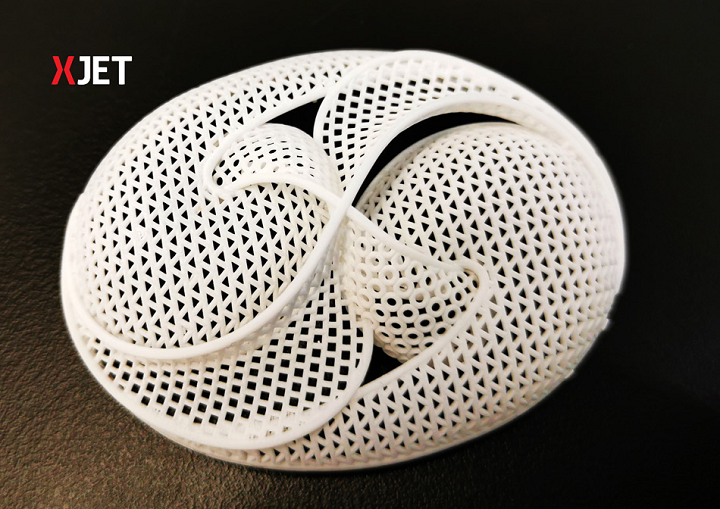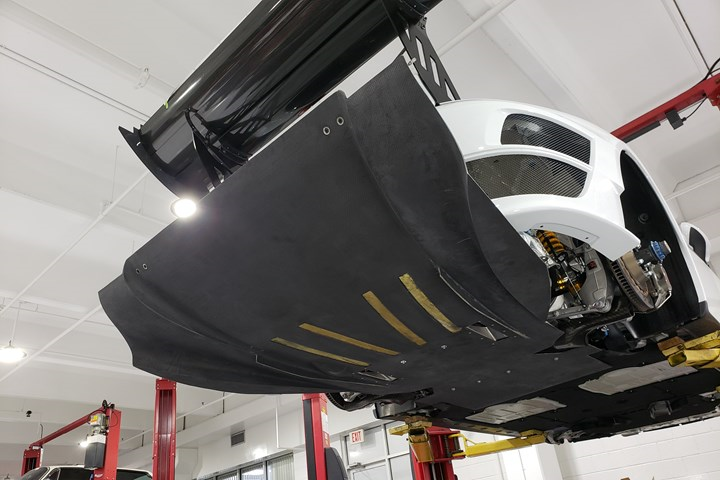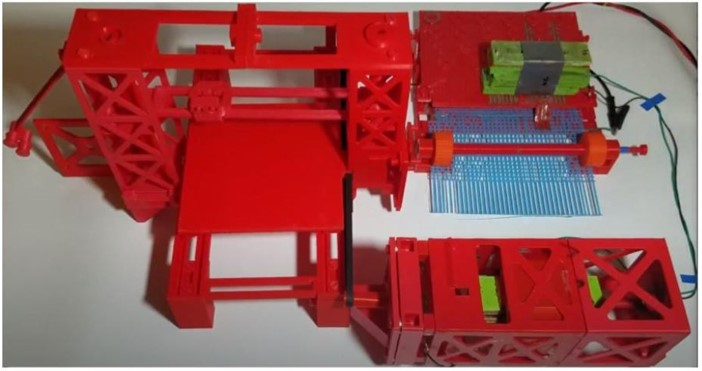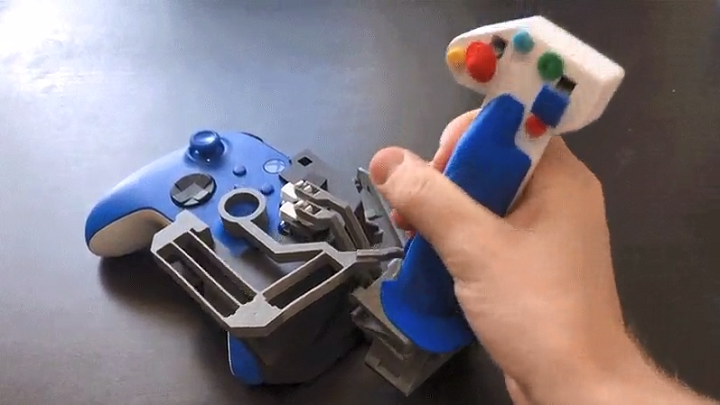We’re starting with materials in today’s 3D Printing News Briefs, as XJet as announced the commercial availability of alumina ceramic. Moving on, Raise3D has announced the ideaMaker 4.2.0 beta, and an incoming MIT student won an IEEE Scholarship for his self-replicating 3D printer. Stratasys 3D printed several components for Champion Motorsport’s modified Porsche racecar. Finally, a creative maker used PLA to 3D print an adapter that turns an Xbox controller into a joystick.
XJet Offering Alumina Ceramic Material

The popular technical ceramic, alumina, is now available for additive manufacturing on XJet AM systems.
Israel-based XJet Ltd. is expanding its AM materials portfolio with the announcement that its alumina (aluminum oxide) ceramic is now commercially available. The company chose to develop this particular material because it’s often been used as a technical ceramic, and because there’s a lot of market demand for parts 3D printed with its NanoParticle Jetting (NPJ) technology. The material offers great electrical insulation, high hardness, and is resistant to high temperatures, as well as featuring high mechanical strength, high thermal conductivity, and high wear resistance. A global customer in the US has been testing the alumina ceramic successfully over the last few months, and you can see it for yourself at several upcoming ceramics and AM shows, including Ceramics Expo in Cleveland, RAPID + TCT in Chicago, and formnext in Frankfurt.
“We are pleased to bring this extremely useful and valuable technical ceramic material to market, adding to our dynamic AM portfolio. New materials open up new avenues for our existing, as well as prospective customers and serve to enhance their business opportunities,” said Dror Danai, the CBO of XJet.
Raise3D Announces ideaMaker 4.2.0 Beta
Raise3D, which provides AM solutions for SMEs and LSEs, has announced the beta for its ideaMaker 4.2.0, which further connects and integrates the software with the ideaMaker Library, as well as adding Boolean operations, for an upgraded user experience. The online Library platform—live since last May—allows users to download various textures and optimized slicing profiles, and offers handy user tools, like the profile generator, which makes it quick and easy to generate a profile. With this upgrade, it only takes one click to select their preferred slicing profile, as opposed to downloading it from the Library first and then uploading it to ideaMaker.
Other new features include a search tool bar, found under the Advanced Setting window, that can quickly find parameters that contain searched keywords, and the aforementioned Boolean operations, which is available directly in ideaMaker. This feature makes it possible for users to create unions, intersections, or subtractions of 3D models, enabling for more experimentation without needing to get into a different 3D modeling software. You can learn about more improvements and features available in ideaMaker 4.2.0 in the release notes, and download it here.
Self-Replicating 3D Printer Wins 2nd at Regeneron ISEF 2021
The Regeneron International Science and Engineering Fair (ISEF), established by the IEEE Foundation and administered by IEEE Educational Activities, was held virtually this year, and scholarship awards were presented to students for their outstanding projects. Brian Minnick, an incoming freshman at MIT who plans to study material science and engineering, won 2nd place and $600 for his self-replicating 3D printer, which he says creates “plentiful” opportunities, with the main application being the eventual creation of a self-replicating spaceship. Minnick believes that the high cost of building spaceships prevents long-term space travel, and wanted to change up the notion that self-replicating machines are only in science fiction and can’t print electronic parts or motors. To get around this, he developed a 3D printable sintered solder paste material that was conductive enough to work.
“To print a model, the printer must have a data strip representing the model to be printed. The data strip has columns and rows, where each row corresponds to a linear movement of the printer, and each column corresponds to one particular function of the data strip. Within each row, each column can be toggled on or off, and the distribution of “activated” columns encodes the rotation speed and direction for all of the motors on the printer. This acts as a heading—the direction the printer will move in. The length of each row encodes how long the printer moves in that direction,” Minnick explained.
“I also created a data strip generator program, which takes each linear movement in a digital model and encodes it in a row in an output data strip. This allows any digital model to be transformed into a representative data strip to be printed on the fully 3D printed 3D printer. The beauty of this control system is that it can be used with any kinematics; it doesn’t have to be a 3D printer. The same motor controller and data strip system can be used to control robotic arms, specialized data strip duplicators, or a method of loading and unloading data strips to print different parts. This modularity was a key goal of my design process.”
You can learn more about Minnick’s project here.
Stratasys & Champion Motorsport 3D Printing Racecar Components

Stratasys 3D printed 16 total components for Champion Motorsports’ recently modified Porsche racecar. The largest component (pictured) was a 7′ x 5′ rear diffuser test prototype, for which Stratasys printed a sandwich core from Ultem 1010 plastic (shown in gold), which was then wrapped in carbon fiber prepreg. Photo courtesy of Stratasys
Champion Motorsport won first place in the recent Time Attack 1 Division of the 99th Pikes Peak International Hill Climb with its modified 911 Porsche GT2 RS Clubsport car, which features several 3D printed aerodynamic components created by its partner Stratasys—one of these components was the successful first application for its new toolless, carbon fiber-wrapped sandwich core technology. Based on an earlier project between the two, the 3D printed core doesn’t dissolve in water, and instead acts as a structural core for a finished prototype or part. Stratasys used high-temperature Ultem 1010 from petrochemical company SABIC to print a rigid honeycomb core wrapped in carbon fiber.
“We print the exact shape to fit on the car, then simply wrap with carbon fiber, bag and cure, without using a mold. We started with the soluble cores, which our customers still use, and now we’ve moved into these sandwich cores, which will have broad applications in aerospace and automotive,” explained Allen Kreemer, senior strategic applications engineer at Stratasys.
All told, Stratasys printed 16 aerodynamic parts for the Champion Motorsport project, some out of carbon fiber-filled Nylon 12, some out of Nylon 6, and some were the Ultem 1010 carbon fiber-wrapped cores. The parts consisted of a large rear diffuser part and front splitter, both of which were prototypes built for testing, along with smaller production parts like vehicle side skirts, winglets on the front bumper, and many of the strakes on the exterior to help control airflow around the vehicle.
3D Printed Flight Simulator Adapter for Xbox Controller
Finally, maker Akaki Kuumeri hacked an Xbox controller, using a complex 3D printed adapter to turn it into a joystick for the Microsoft Flight Simulator game. You can’t really find an affordable wireless flight stick for the Xbox, but the typical controller isn’t great for flying, which is why Kuumeri just decided to make their own flight stick. The adapter is completely 3D printed out of PLA—no metal gears or screws needed—which allows for flexibility so it can be bent multiple times without snapping or deforming. Thin sheets of PLA were used to create functional hinges, and plastic linkages relay the flight stick’s circular movements to a joystick on an Xbox Series X controller; the thumb buttons on top of the flight stick send down presses to the action buttons so you can control the aircraft’s flaps, throttle, and trim. Kuumeri uploaded a simplified, free version of the adapter to Thingiverse, which helps other makers ensure that their 3D printer is sufficient enough for printing the real deal, as Kuumeri is also selling the 3D models and files for the adapter on Etsy.
“You will need to have a well-tuned printer for the joints to have proper tolerances. Otherwise, you will have to fine-tune your print settings, or sand and shave some of the parts,” Kuumeri said.
Subscribe to Our Email Newsletter
Stay up-to-date on all the latest news from the 3D printing industry and receive information and offers from third party vendors.
You May Also Like
Further Understanding of 3D Printing Design at ADDITIV Design World
ADDITIV is back once again! This time, the virtual platform for additive manufacturing will be holding the first-ever edition of ADDITIV Design World on May 23rd from 9:00 AM –...
3D Printer Maker EVO-tech Reborn as NEVO3D — Once More With Feeling
EVO-tech was a 3D printing service and original equipment manufacturer established in 2013 and based in Schörfling am Attersee, Austria. The company produced high-quality material extrusion systems featuring linear bearings,...
3D Systems Brings 3D Printed PEEK Cranial Implant to the U.S. with FDA Clearance
For more than 10 years, 3D Systems (NYSE:DDD) has worked hand-in-hand with surgeons to plan over 150,000 patient-specific cases, and develop more than two million instruments and implants from its...
CDFAM Returns to Berlin for Second Annual Symposium
The second CDFAM Computational Design Symposium is scheduled for May 7-8, 2024, in Berlin, and will convene leading experts in computational design across all scales. Building upon the first event...


































